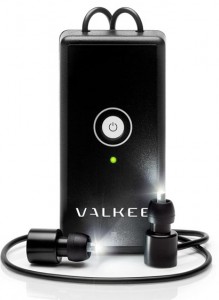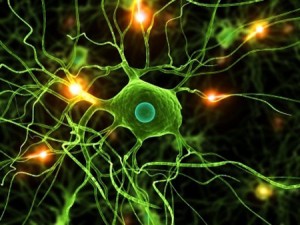Small Direct Current Boosts Brain Function
 A recent study conducted at Oxford University on the use of transcranial direct current stimulation (tDCS) to improve math skills is getting considerable attention. A small group of college students received a tiny direct current to the parietal lobe for 20 minutes per day for six days. They showed a significant improvement in numerical ability (representation of artificial numeric symbols) that persisted for as long as six months.
A recent study conducted at Oxford University on the use of transcranial direct current stimulation (tDCS) to improve math skills is getting considerable attention. A small group of college students received a tiny direct current to the parietal lobe for 20 minutes per day for six days. They showed a significant improvement in numerical ability (representation of artificial numeric symbols) that persisted for as long as six months.
I have seen other studies that claim tDCS can improve creativity, declarative memory, visual memory, motor skills and pain relief as well as speed stroke recovery.
I am not aware of any devices and training protocols available to the general public. Interested to hear from readers that use tDCS.
Categories: Memory and Learning, Sleep Tags:
Stimulate Your Photosensitive Brain
 A group of researchers in Finland have demonstrated that our brain is photosensitive. Brain function changes when you shine light on it. Their research has shown that brain light therapy can improve cognitive function, mental energy and mood. The effects seem significant and long lasting.
A group of researchers in Finland have demonstrated that our brain is photosensitive. Brain function changes when you shine light on it. Their research has shown that brain light therapy can improve cognitive function, mental energy and mood. The effects seem significant and long lasting.
You can shine light directly on some of the photosensitive regions of your brain through the ear canal. A consumer product, Valkee, does exactly that with light-emitting ear plugs. According to the researchers you need to use it for 10 minutes a day to see results.
Interested to hear from readers that have used the Valkee or some other form of light-based brain stimulation.
Categories: Other Tags:
Low Dose Electrical Current Boosts Creativity
 Our thinking and decision-making is strongly shaped by what has worked in the past. Success is compiled into rules and mental sets that make us more efficient but also blind us to innovative alternatives. If we could safely disrupt the applications of mental sets at the right time we might enhance our creativity. That idea was recently tested using transcranial direct current stimulation (tDCS) by researchers at the Center for the Mind.
Our thinking and decision-making is strongly shaped by what has worked in the past. Success is compiled into rules and mental sets that make us more efficient but also blind us to innovative alternatives. If we could safely disrupt the applications of mental sets at the right time we might enhance our creativity. That idea was recently tested using transcranial direct current stimulation (tDCS) by researchers at the Center for the Mind.
The experiment involved 60 subjects that were given a creative problem to solve. Some received a small electrical current applied to their brain in a region thought to hold mental sets that guide our problem solving. The results were dramatic:
“Only 20% of participants solved an insight problem with sham stimulation (control), whereas 3 times as many participants did so…”
A strong effect but one that needs to be repeated and further explained using brain scanning studies.
Only a tiny amount of electrical current is being used in tDCS. It has been the focus of other studies designed to enhance cognitive performance. We covered one from Oxford University in an earlier post on the Next Brain Blog.
I am interested to hear from readers about how low-level direct current is being used to stimulate cognitive performance.
Categories: Other, Problem Solving Tags: cognitive bias, experiential learning, tDCS
